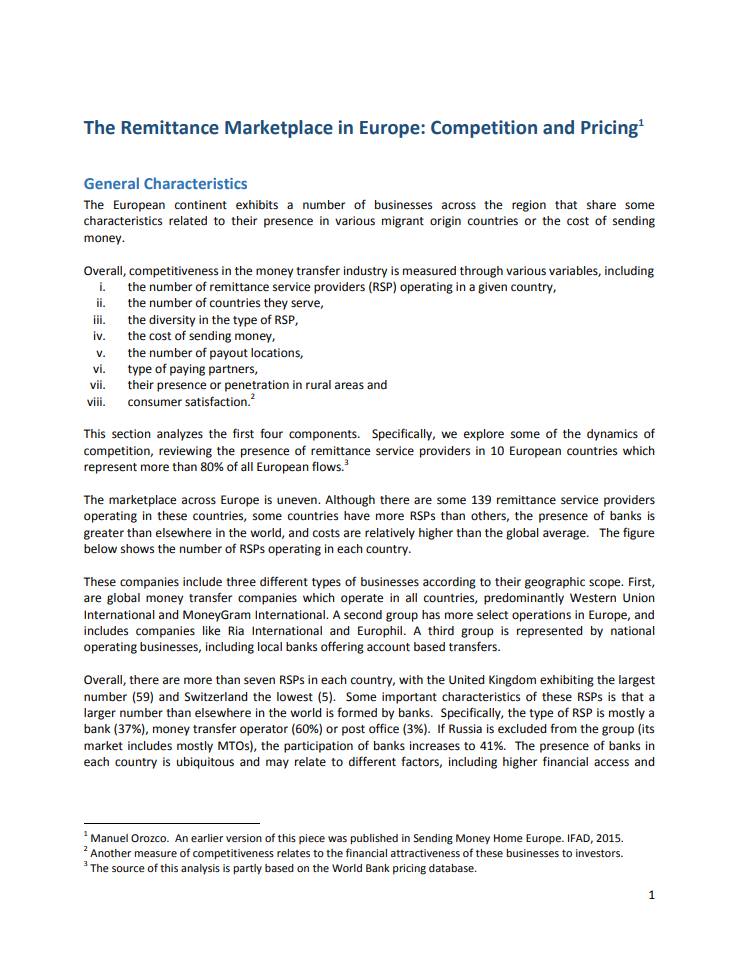Can Spain Solve the Cuba Problem?
By all accounts, Spain wants to bring change to the European Union’s Cuba policy. In so doing, it is tackling a foreign policy challenge that often sheds more heat than light.
The European remittance marketplace exhibits a number of businesses across the region that share some characteristics related to their presence in various migrant origin countries or the cost of sending money.*
Overall, competitiveness in the money transfer industry is measured through various variables, including:
This text analyzes the interplay of the aforementioned indicators. Specifically, it explores some of the dynamics of competition, reviewing the presence of remittance service providers in 10 European countries which represent more than 80% of all European flows.[2] Overall, it can be concluded that:
a. The marketplace across Europe is uneven.
b. Although there are some 139 remittance service providers operating in these countries, some countries have more RSPs than others.
c. The presence of banks is greater than elsewhere in the world,
d. Costs are relatively higher than the global average.
Read the full text here.
Note: An earlier version of this piece was published in Sending Money Home Europe, IFAD, 2015.
[1] Another measure of competitiveness relates to the financial attractiveness of these businesses to investors.
[2] The source of this analysis is partly based on the World Bank pricing database.
By all accounts, Spain wants to bring change to the European Union’s Cuba policy. In so doing, it is tackling a foreign policy challenge that often sheds more heat than light.
Since the global economic recession in 2008-09, several European countries have struggled with debt crises that many analysts have likened to Latin America’s struggles in past decades. What do the two situations have in common? What differentiates them?
Could Brazil, along with other BRICS, be part of the solution to the euro zone crisis?
